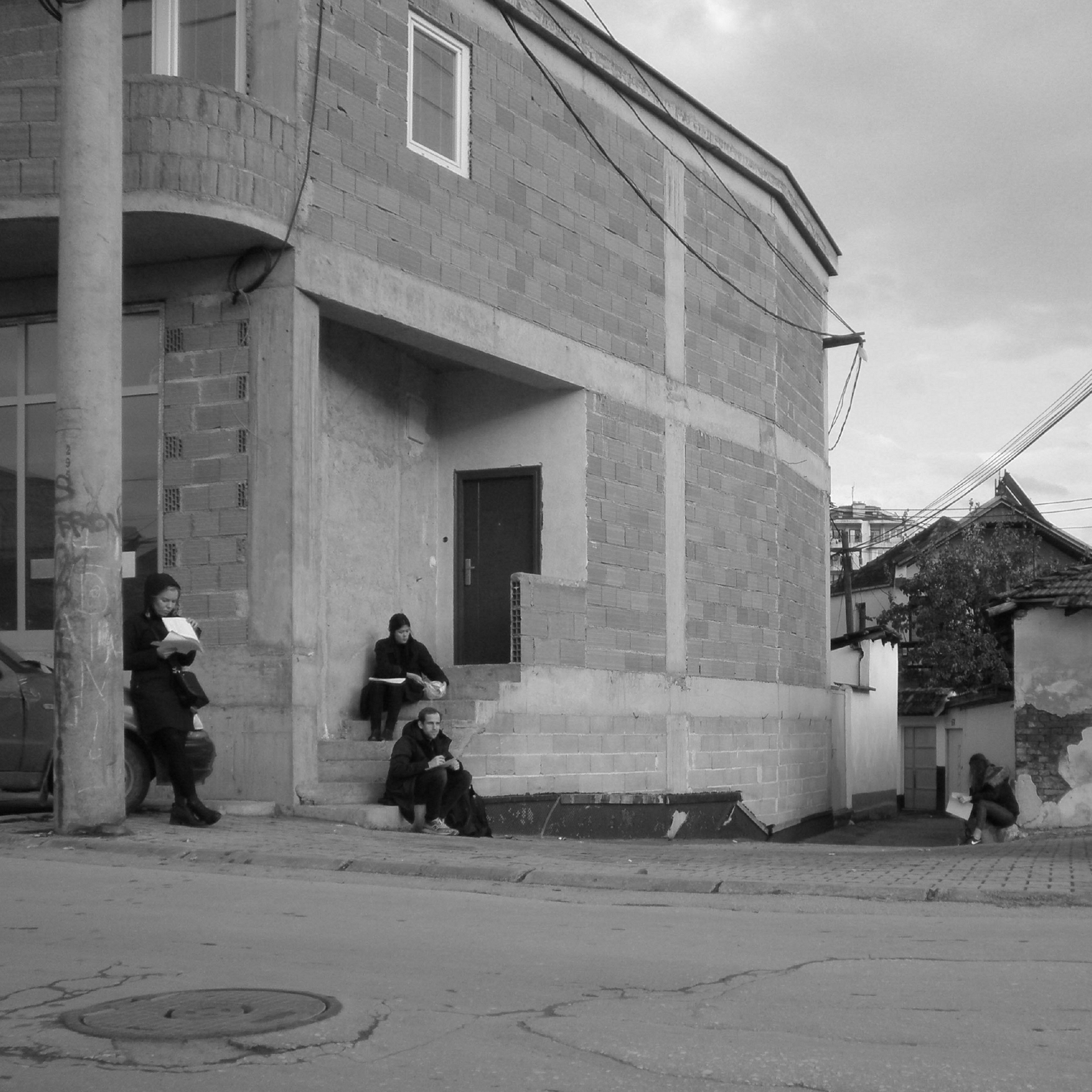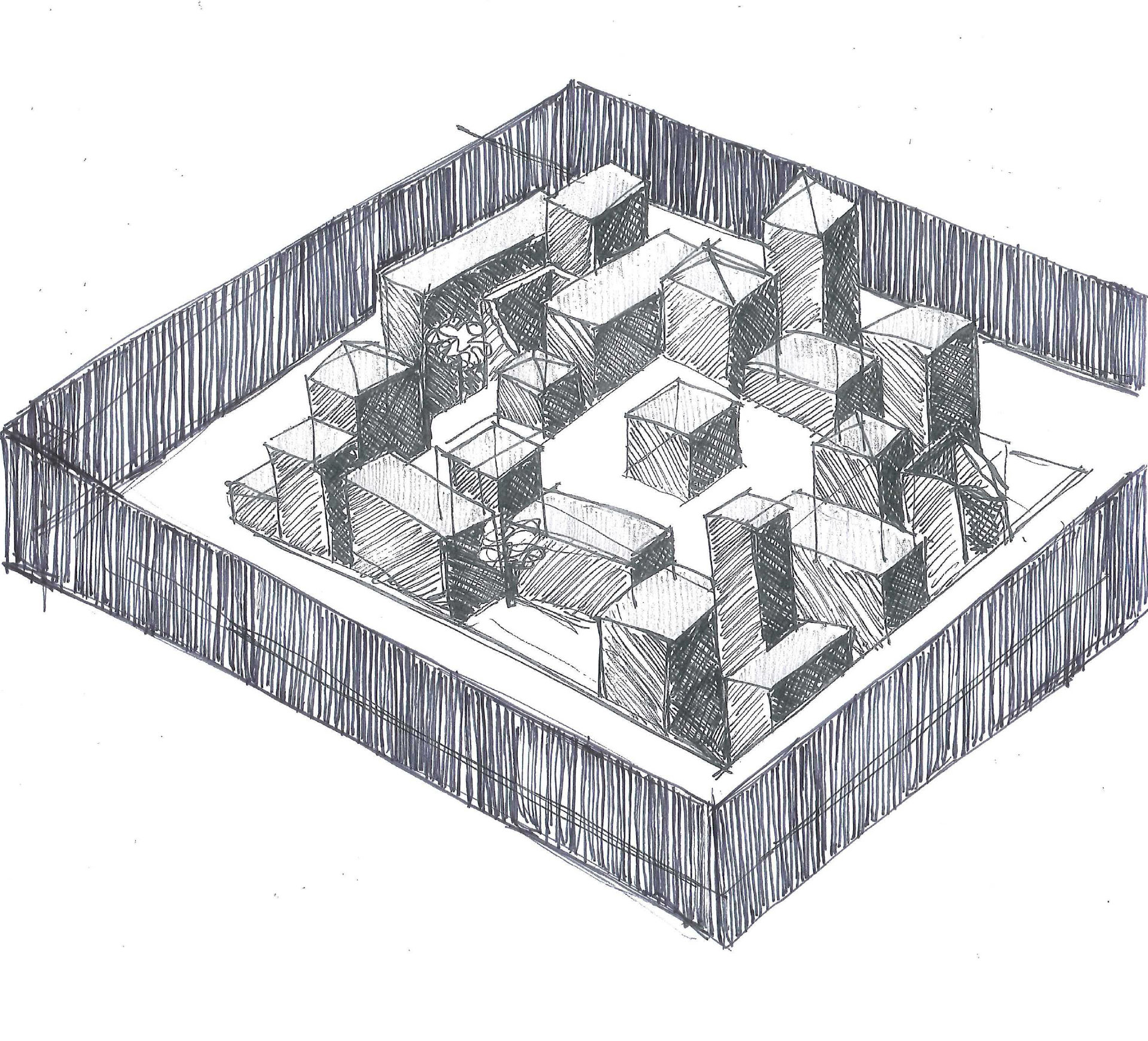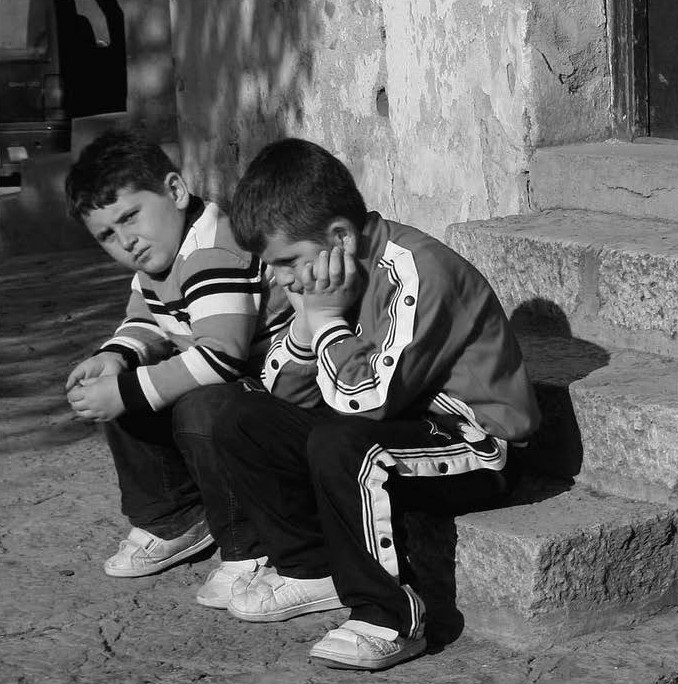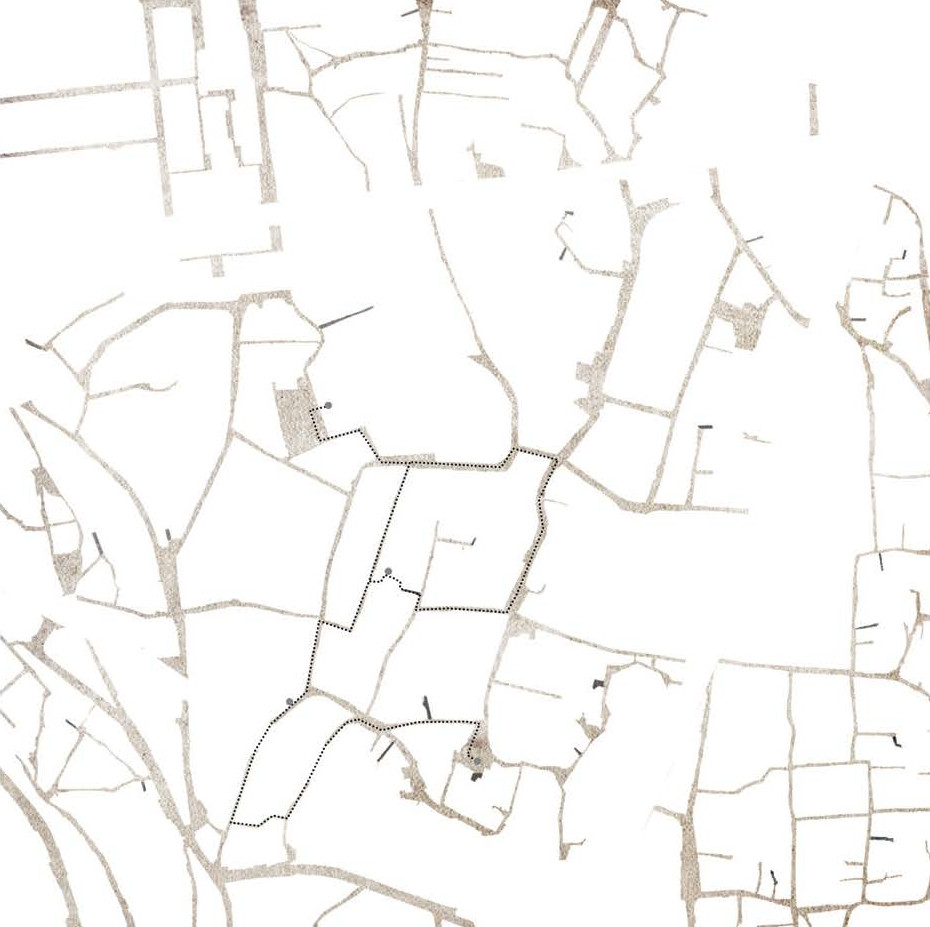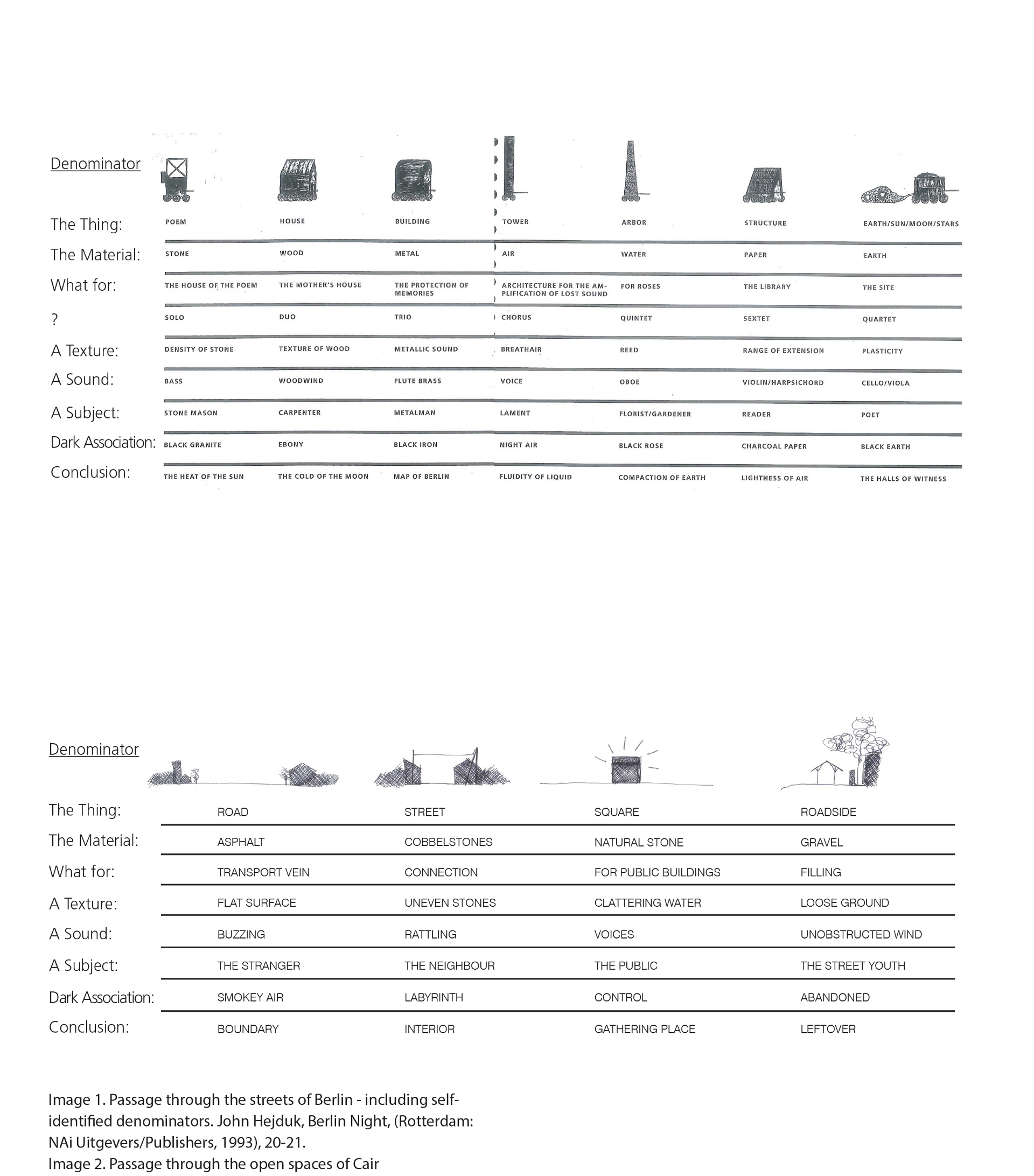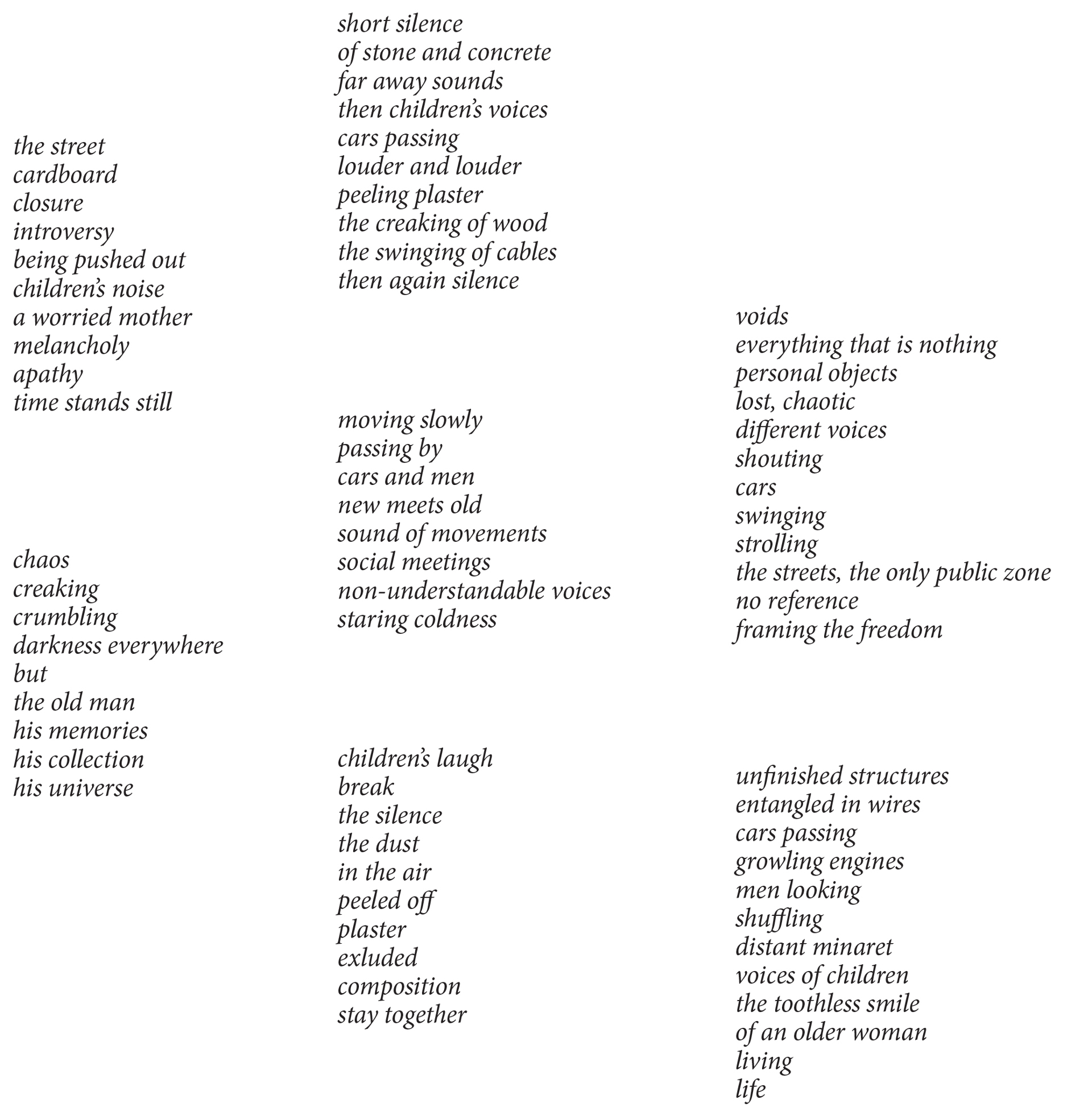Poetic techniques to express atmosphere
Cair in the spirit of Hejduk
Artan
Finally the school is out. Artan is chasing Besian. Besian runs from one end of the street to the other, suddenly he disappears behind the corner. Artan follows him, there he is! He enters a door. The door swings back in its position. Artan pushes it and looks around. Where did he go? Then he sees Besian climbing the outside stairs of his house. Besian looks down to Artan and shouts: “You can’t catch me!” and he disappears inside. Artan goes back to the street to continue his route. Two more streets and he is home as well. He hopes his grandmother prepared something delicious because he is very hungry. After lunch he goes back onto the street to search for Besian. He carries his football with him. They always play together in the afternoon. When it gets dark he returns home. When he enters his street Artan sees an older man talking to his granddad. He knows the man and he decides to hide behind the corner. He hears the man talking to his granddad: “Your grandson is stealing my bicycle every day!” Artan decides to walk another round before he faces his granddad because he will definitely be very angry.
Student: Seline Wijker
Title: Poetic techniques to express atmosphere
Semester: 2014 Autumn
Teachers: Klaske Havik
Cair in the spirit of Hejduk
Is there a way to get a grip on this mystical concept called atmospheres that keeps contemporary architectural practices occupied? Is there a way to analyze them? It seems 'atmospheres' are almost impossible to capture. Could it be that poetry is capable of capturing them? Or more specific: Is poetry something that can be translated and actively used as an analytical tool? Architect and poet John Hejduk dedicated his life to getting grip on the 'sense of a place' and he explored many different disciplines to translate this sense of place, which seems to be the essence of architecture. With the work of Hejduk as a starting point Seline Wijker developed a method based on the use of poetic techniques. She tested the method on site, which happened to be the very characteristic and lively neighborhood of Cair, in the center of Macedonia's capital Skopje.
One of Hejduk's exercises, 'Passage through the streets of Berlin' was taken as a starting point to get to a practical application of Hejduks methods. Possible denominators where identified that characterize the different structures invented by Hejduk. With the list of denominators it was possible to analyze in the same way structures of Cair.
The outcome of the exercise was surprisingly accurate, given the fact that it was based on pictures and performed before visiting the site. However it was necessary to find something which could combine the rather fragmented outcome of the exercise. While 'the passage through exercise' stays on a level of mere 'articulation', Hejduk's poems seem to organize the words within an certain atmosphere. The poems do not just give 'physical existence to the words themselves', they evoke a spatial situation. They are more like atmospheres in the way they make you perceive sounds, temperature, smells. Hejduk seems to accomplish this through very dense poetry; there are no words that could be left out.
"Both drawing and writing contain a compaction of themes which in their conceptual density deny reduction and exfoliation for a reality of another kind: together they reveal an essence of architecture itself." 1
To test whether the poems were indeed capable of catching a certain atmosphere it was important to actually go to Cair. A workshop in Cair with student from Delft and Skopje resulted in 7 poems, which were written separately but nevertheless showed some striking similarities. All the poems showed a certain negativity, which mainly had to do with the physical structure of the environment, but they all showed, very clearly, certain qualities too. Those qualities were present in the people. It's the people who are making the neighborhood.
To get a better understanding of the daily life of the inhabitants four stories of the daily life of four different inhabitants were constructed. Those stories, together with the poems let to two future scenario's.
